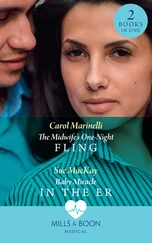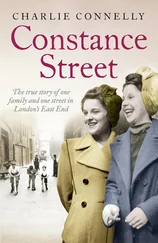Sister Craddock had very curly red hair and a face dotted all over with freckles. Her figure was as round and curvy as her tightly sprung ringlets, and I was as captivated by her appearance as I was by her staunch philosophy on hygiene.
We’d spent the morning studying anatomy with Mr Tate, and my head was brimming with medical facts. I’d enjoyed the lessons and found them easy to follow, because I’d studied chemistry and biology for my A-levels. I pictured myself using my new knowledge, hopefully in the not-too-distant future, to help me bandage a wrist or give a patient an injection. The thought was nerve-racking yet exhilarating.
‘Cleanliness is next to godliness,’ Sister Craddock chimed, echoing Miss Morgan’s words on our very first day here. Spinning on her tightly laced brogues, she looked each of us in the eye one by one as she warned very seriously: ‘As a nurse, it is imperative never, ever to forget that.’
This was clearly very important at the MRI. We were student nurses, not cleaners, but I figured I’d better listen as attentively to Sister Craddock as I did to Mr Tate. ‘Cleanliness is next to godliness.’ I let the phrase settle in my head, wondering what Sister Mary Francis would make of it. In all my years at my convent school I had heard hundreds, if not thousands, of references to ‘godliness’ but I did not recall that particular phrase. However, I had a pretty good idea I’d be remembering it regularly from now on.
Sister Craddock led a small group of us down several corridors and towards one of the urology wards, continuing to lecture us about hygiene.
‘What doesn’t kill you makes you stronger,’ she said, and I wondered what she could mean by that. Were the cleaning fluids dangerous? What could possibly threaten us here in the hospital? I was getting used to her loud, melodic voice now and my mind was wandering.
As we approached the ward a sudden, silly image flashed into my head. I imagined Sister Craddock stepping up on stage and belting out the song ‘Goldfinger’. Shirley Bassey was Welsh, wasn’t she? Sister Craddock didn’t look anything like Shirley Bassey but she certainly sounded like her. I could just picture her singing her heart out, flinging her arms wide at her grand finale, then afterwards pointing at the audience triumphantly and declaring: ‘What doesn’t kill you makes you stronger, ladies and gentlemen …’
‘Cleanliness is of the utmost importance on the wards, and to maintain our high standards is essential.’ Sister Craddock’s stern words hauled me back into the moment. Images of sequins and stage lights were extinguished in a flash, replaced by thoughts of dusting cloths, mops, buckets and disinfectant. I listened earnestly.
‘We have Nightingale wards here, girls, and if she were alive I would want Florence Nightingale herself to be proud of the cleanliness of them.’
I knew the large, open-plan wards were named after Florence Nightingale because she pioneered their design, but if I’m perfectly honest that was as much as I knew about them, despite their famous namesake. I was curious to find out more.
Sister Craddock pushed her soft bulk through a set of double swing doors, giving us our first glimpse of ‘her’ ward. The smell of cleaning fluid made my nostrils tingle as I stepped into this new territory. ‘Follow me, girls,’ she instructed. ‘I will give you a brief tour of the ward. Please be respectful of patients. No talking. I will do the talking.’
We stood in the first section of the ward, which Sister Craddock explained had a kitchen and a double side room to the left, and sister’s office, linen cupboards and two single side rooms to the right, which we were not invited to enter. Before us stood another set of swing doors, which led into the main part of the ward. We filed gingerly through, eyes and ears wide open.
Twelve beds lined each side of the vast ward, all occupied by ladies in varying stages of sleep who were swathed in flannelette nightgowns and knitted bed jackets. Most looked cosily middle-aged and some wore hairnets and sucked their gums as they surveyed us curiously but courteously.
There was something slightly surreal about the scene that I couldn’t quite put my finger on. One or two women were a bit younger and more fashionable than the others, with floral-print nightgowns and bobbed hair, yet there was an unmistakable correlation between them all.
Down the middle of the ward stood the night sister’s table, covered in green baize and with a large lamp hanging above it. At night, we were informed, a green cloth was placed over the lamp to create an air of calm and promote restful sleep. Beyond it, but also in the centre section of the ward, was a store cupboard plus a metal trolley housing a sterilising unit, and finally the patient’s long wooden dining table.
A sluice room, toilets and a bathroom were situated in the far right-hand corner of the ward, behind bed thirteen. Under the windows at the very back of the ward there was a small television, a few Draylon-covered armchairs and a low coffee table with a neat pile of women’s magazines on it. There was also a round, black ashtray, which had a cover. I’d seen one like it before and knew that when you pressed the button on top the ash would spin cleanly out of sight.
Sister Craddock’s voice sang on as I took in the scene. ‘There are twenty-eight beds in all; four in the side rooms and twenty-four in the main ward. Each ward is run by one sister, six to eight staff nurses and between ten and sixteen student nurses working around the clock. Shifts run from 7 a.m. to 5 p.m., 1.30 p.m. to 9 p.m. and 9 p.m. to 7.30 a.m. Jobs are allocated at each shift change and routines must be strictly adhered to.’
As Sister Craddock spoke, a penny slowly dropped for me. I looked at the twelve beds lined up along each white-painted wall and realised how perfectly arranged they were.
‘The ward has to be clean, neat and tidy at all times,’ the Welsh voice continued. ‘Patients are washed and have their beds changed every day. Bedding must be fitted exactly the same way each day, with enveloped corners on bottom sheets, pillowcase ends facing away from the doors and perfectly folded counterpanes on top of the blankets. You will receive precise instruction in bed-making procedures in due course. Please remember always to pull the top sheet up a little to make room for the toes, and to leave the counterpanes hanging at the sides, for neatness. The wheels of the bed must all point in the same direction, and nothing is to be left lying around on the tops of the lockers.’
That was it. The immaculate presentation of the beds and furniture was what made the ward appear slightly surreal. I had never seen such a well-ordered room in my life before, and I marvelled at how a ward full of sick women in a mishmash of nighties and hair nets could look so methodically well ordered.
The crisp cotton counterpanes were all pale green to match the curtains that could be pulled around each bed. Every bedside locker had a little white bag taped to it for rubbish, leaving the top clear for a jug of fresh drinking water and a glass. Some patients had a vase of flowers on their locker-top or one or two get well cards.
‘Only one bunch of flowers is permitted per patient,’ Sister Craddock cautioned, ‘and it must be removed to the bathroom at night.’
We nodded in unison. Rudimentary biology told me this had something to do with plants releasing carbon dioxide into the atmosphere at night.
‘Smoking is permitted on the ward but not encouraged.’ We nodded in agreement again. This seemed perfectly reasonable.
‘Orderlies damp dust every surface in the ward daily: windowsills, lockers, bed frames and furniture. Domestics clean the floors, toilets, bathroom, kitchen and sister’s office, and twice a week they pull out the beds and clean behind them, thoroughly.
Читать дальше












